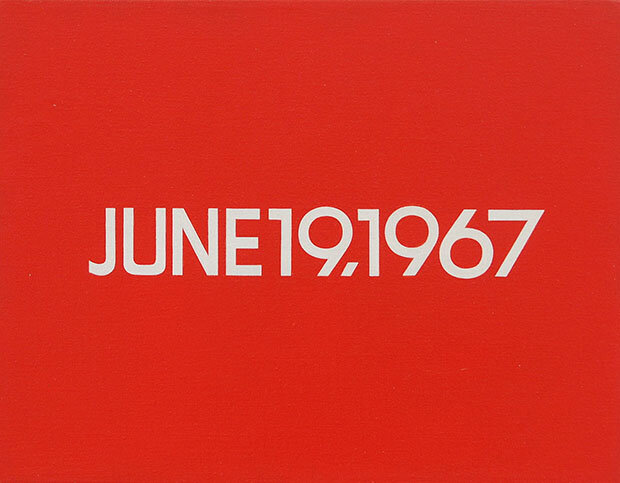On Kawara's Today Series and Staying at Home
On Kawara’s Today Series and Staying at Home Conceptual artist On Kawara worked in the medium of time. He died in 2014 at the age of 29,771 days. Over the course of almost fifty years, Kawara made thousands of paintings for his Today series. Each was composed of a solid color background of hand-mixed paint on canvas and that day’s date in bold, hand-lettered sans-serif text. He used the language and date format for the country in which the piece was done. If he didn’t complete a painting before midnight, he destroyed it. Some days he didn’t make a painting at all, while other days he made multiple. Kawara stored each work in a handcrafted box that was lined with that day’s newspaper. He kept a calendar for another series he called One Hundred Year Calendars, marking the days he completed a Today painting with a red or green dot.
Each painting in the Today series simultaneously embodies the micro and macro, the documentary and the conceptual. The text on the canvas places the day in a defined sequence of the Gregorian calendar, and the newspaper lining the box reports on the state of the world. However, the painting itself is the product of an individual act, rendering an abstract concept (time) into a visual medium. There are Today series paintings completed on landmark days in history such as July 20, 1969, the date of the Apollo 11 moon landing. The only distinction between July 20, 1969 and other works in the series is its larger size. The simplicity and consistency of composition throughout the series allows these works to act as a vessel into which we can pour our memories, thoughts, and feelings. Knowledge and personal memories of this date, or lack thereof, will evoke different reactions from person to person. What I know about the moon landing comes from what I’ve read or heard. My mom remembers watching it live on tv, going outside to look at the moon, visible in the daylight, and marveling at the fact that human beings were up there at that very moment. In July 20, 1969, Kawara quantifies a 24-hour period of his own life, other individual lives, and human history with a physical object. Each painting is, in effect, a monument to a single day.
July 20, 1969 resonates with me in this moment of self-quarantine. We’re in the midst of a collective, near-global experience that seems likely to be the marker of a new era. What will I remember about the COVID-19 pandemic in fifty years? What will we remember nationally? Globally? My individual actions, thoughts, and emotions are just one facet of what will come to be collective memory, separate from documented facts of what happened where and when. Though each day doesn’t feel all that different from the last, being restricted in who I can see, where I can go, and what I can do has changed the way I experience time passing. Days seem to blur together because there’s little difference with which I can anchor myself in time, and yet I’m acutely aware of how long I’ve been confined to my house. I doubt I’m the only one who has forgotten whether it’s Tuesday or Thursday.
To find comfort in the contradiction of simultaneously experiencing repetition and uncertainty about the future, I’m taking a page from On Kawara’s book. I find myself building routines to quantify the passing of time in tangible ways. How many days in a row can I complete the New York Times crossword puzzle? How many miles have I walked around my neighborhood? How many beers have I consumed? It may seem like this approach would feed into the sensation of floating untethered in time. However, rather than feeling monotonous, these routines feel crucial to being able to get through a 24- hour period, even if it’s likely the next one will be virtually the same. Kawara couldn’t have known when he started the Today series in 1966 that he would be working on this series day after day after day for the rest of his life. He woke up and made a painting, likely thinking about himself and the world and what even is time. While I’m confident the stay at home order won’t last for fifty years (fingers crossed), I don’t know when it will end. Until it does, I’m embracing the inevitability of facing tomorrow, exploring my thoughts and feelings, and finding a way to make meaning with the luxury of time.
Hannah Burstein
Los Angeles, May 2020

